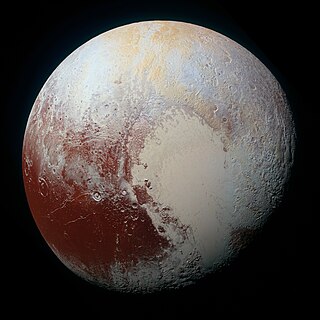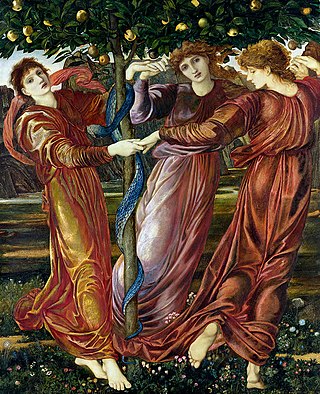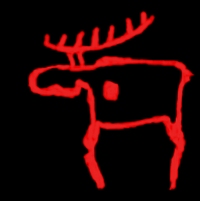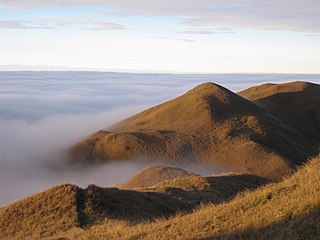
This is a list of named geological features on Triton.

This is a list of named geological features on Triton.
| Catena | Named after | Name approved (Date ·Ref) |
|---|---|---|
| Kraken Catena | The Kraken (Norse) | 1991 · WGPSN |
| Set Catena | Set (Egypt) | 1991 · WGPSN |
Tritonian cavi are named after mythological water spirits.
| Cavus | Named after | Name approved (Date ·Ref) |
|---|---|---|
| Apep Cavus | Apep (Egyptian) | 1991 · WGPSN |
| Bheki Cavus | Bheki (Indian) | 1991 · WGPSN |
| Dagon Cavus | Dagon (Babylonian) | 1991 · WGPSN |
| Hekt Cavus | Heget (Egyptian) | 1991 · WGPSN |
| Hirugo Cavus | Hiruko (Japanese) | 1991 · WGPSN |
| Kasyapa Cavus | Kashyapa (Hindu) | 1991 · WGPSN |
| Kulilu Cavus | Kulilu (Babylonian) | 1991 · WGPSN |
| Mah Cavus | Mah (Persian) | 1991 · WGPSN |
| Mangwe Cavus | Mangwe (Ila people of Zambia) | 1991 · WGPSN |
| Ukupanio Cavus | Ukupanipo (Hawaiian) | 1991 · WGPSN |
| Crater | Named after | Name approved (Date ·Ref) |
|---|---|---|
| Amarum | Amarum (Quechua people of Ecuador) | 1991 · WGPSN |
| Andvari | Andvari (Norse) | 1991 · WGPSN |
| Cay | Cay (Mayan) | 1991 · WGPSN |
| Ilomba | Ilomba (Lozi people of Zambia) | 1991 · WGPSN |
| Kurma | Kurma (Hindu) | 1991 · WGPSN |
| Mazomba | Mazomba (Chaga people of Tanzania) | 1991 · WGPSN |
| Ravgga | Ravgga (Finnish) | 1991 · WGPSN |
| Tangaroa | Tangaroa (Māori) | 1991 · WGPSN |
| Vodyanoy | The Vodyanoi (Slavic) | 1991 · WGPSN |
| Dorsum | Coordinates | Named after | Name approved (Date ·Ref) |
|---|---|---|---|
| Awib Dorsa | 7°S80°W / 7°S 80°W | Word for 'rain' from the Nama language | 1991 · WGPSN |
Tritonian fossae are named after sacred bodies of water.
| Fossa | Coordinates | Named after | Name approved (Date ·Ref) |
|---|---|---|---|
| Jumna Fossae | 13°30′S44°00′E / 13.5°S 44°E | Jumna River, India | 1991 · WGPSN |
| Raz Fossae | 8°00′N21°30′E / 8°N 21.5°E | Pointe du Raz, Brittany | 1991 · WGPSN |
| Yenisey Fossa | 3°00′N56°12′E / 3°N 56.2°E | Yenisey River, Siberia | 1991 · WGPSN |
Tritonian maculae are named after water spirits from various mythologies.
| Macula | Named after | Name approved (Date ·Ref) |
|---|---|---|
| Akupara Maculae | Akupara, Hindu | 1991 · WGPSN |
| Doro Macula | Doro, Nanais people of Siberia | 1991 · WGPSN |
| Kikimora Macula | Kikimora, Slavic | 1991 · WGPSN |
| Namazu Macula | Namazu, Japanese | 1991 · WGPSN |
| Rem Macula | Rem, Egyptian | 1991 · WGPSN |
| Viviane Macula | Viviane, British | 1991 · WGPSN |
| Zin Maculae | Zin, Niger | 1991 · WGPSN |
Tritonian paterae are named after sacred waters and sea monsters from various mythologies.
| Patera | Named after | Name approved (Date ·Ref) |
|---|---|---|
| Dilolo Patera | Lago Dilolo, Angola | 1991 · WGPSN |
| Gandvik Patera | Gandvik, Norse | 1991 · WGPSN |
| Kasu Patera | Lake Kasu, Zoroastrianism | 1991 · WGPSN |
| Kibu Patera | Kibu Island, Mabuiag people of Melanesia | 1991 · WGPSN |
| Leviathan Patera | Leviathan, Hebrew | 1991 · WGPSN |
Tritonian plains are named after watery realms in various mythologies.
| Planitia | Named after | Name approved (Date ·Ref) |
|---|---|---|
| Ruach Planitia | Ruach, French | 1991 · WGPSN |
| Ryugu Planitia | Ryūgū, Japanese | 1991 · WGPSN |
| Sipapu Planitia | Sipapu, Pueblo | 1991 · WGPSN |
| Tuonela Planitia | Tuonela, Finnish | 1991 · WGPSN |
Tritonian plateaus are named after legendary islands.
| Planum | Named after | Name approved (Date ·Ref) |
|---|---|---|
| Abatos Planum | Abatos, Egyptian | 1991 · WGPSN |
| Cipango Planum | Cipangu, Marco Polo's name for Japan | 1991 · WGPSN |
| Medamothi Planum | Medamothi, French | 1991 · WGPSN |
Volcanic plumes on Triton are named after water spirits in various mythologies.
| Plume | Named after | Name approved (Date ·Ref) |
|---|---|---|
| Hili | Hili, Zulu | 1991 · WGPSN |
| Mahilani | Mahilani, Tongan | 1991 · WGPSN |
Tritonian regions are named after images from various mythologies.
| Regio | Named after | Name approved (Date ·Ref) |
|---|---|---|
| Bubembe Regio | Bubembe Island, Baganda people of Uganda | 1991 · WGPSN |
| Monad Regio | Monad, Chinese | 1991 · WGPSN |
| Uhlanga Regio | Uhlanga, Zulu | 1991 · WGPSN |
Sulci are long, parallel grooves. Tritonian sulci are named after sacred rivers in the mythology of various cultures.
| Sulci | Named after | Name approved (Date ·Ref) |
|---|---|---|
| Bia Sulci | Bia River (Yoruba) | 1991 · WGPSN |
| Boynne Sulci | River Boyne (Celtic) | 1991 · WGPSN |
| Ho Sulci | Huang He (Chinese) | 1991 · WGPSN |
| Kormet Sulci | Körmt River (Norse) | 1991 · WGPSN |
| Leipter Sulci | Leipter River (Norse) | 1991 · WGPSN |
| Lo Sulci | Luo River (Chinese) | 1991 · WGPSN |
| Ob Sulci | Ob River (Ostiak) | 1991 · WGPSN |
| Ormet Sulci | Örmt River (Norse) | 1991 · WGPSN |
| Slidr Sulci | Sliðr River (Norse) | 1991 · WGPSN |
| Tano Sulci | Tano River (Yoruba) | 1991 · WGPSN |
| Vimur Sulci | Vimur River (Norse) | 1991 · WGPSN |
| Yasu Sulci | Yasu River (Japanese) | 1991 · WGPSN |

Planetary nomenclature, like terrestrial nomenclature, is a system of uniquely identifying features on the surface of a planet or natural satellite so that the features can be easily located, described, and discussed. Since the invention of the telescope, astronomers have given names to the surface features they have discerned, especially on the Moon and Mars. To found an authority on planetary nomenclature, the International Astronomical Union (IAU) was organized in 1919 to designate and standardize names for features on Solar System bodies.

Triton is the largest natural satellite of the planet Neptune. It is the only moon of Neptune massive enough to be rounded under its own gravity and hosts a thin but well-structured atmosphere. Triton orbits Neptune in a retrograde orbit—an orbit in the direction opposite to its planet's rotation—the only large moon in the Solar System to do so. Triton is thought to have once been a dwarf planet, captured from the Kuiper belt into Neptune orbit.

In Greek mythology, the Hesperides are the nymphs of evening and golden light of sunsets, who were the "Daughters of the Evening" or "Nymphs of the West". They were also called the Atlantides from their reputed father, Atlas.

Proteus, also known as Neptune VIII, is the second-largest Neptunian moon, and Neptune's largest inner satellite. Discovered by Voyager 2 in 1989, it is named after Proteus, the shape-changing sea god of Greek mythology. Proteus orbits Neptune in a nearly equatorial orbit at a distance of about 4.75 times the radius of Neptune's equator.

In Breton folklore, a Korrigan is a fairy or dwarf-like spirit. The word korrigan means in Breton "small-dwarf". It is closely related to the Cornish word korrik which means gnome. The name changes according to the place. Among the other names, there are korrig, korred, korrs, kores, couril, crion, goric, kornandon, ozigan, nozigan, teuz, torrigan, viltañs, poulpikan, poulpiquet, and paotred ar sabad.

The planet Neptune has 16 known moons, which are named for minor water deities and a water creature in Greek mythology. By far the largest of them is Triton, discovered by William Lassell on October 10, 1846, 17 days after the discovery of Neptune itself. Over a century passed before the discovery of the second natural satellite, Nereid, in 1949, and another 40 years passed before Proteus, Neptune's second-largest moon, was discovered in 1989.

Finnic paganism was the indigenous pagan religion in Finland, Karelia, Ingria and Estonia prior to Christianisation, the religion was native to the Baltic Finnic peoples. It was a polytheistic religion, worshipping a number of different deities. The principal god was the god of thunder and the sky, Ukko; other important gods included Jumo (Jumala), Ahti, and Tapio. Jumala was a sky god; today, the word "Jumala" refers to all gods in general. Ahti was a god of the sea, waters and fish. Tapio was the god of forests and hunting.

Philippine mythology is rooted in the many indigenous Philippine folk religions. Philippine mythology exhibits influence from Indonesian, Hindu, Muslim, Shinto, Buddhist, and Christian traditions.

Indigenous Philippine folk religions are the distinct native religions of various ethnic groups in the Philippines, where most follow belief systems in line with animism. Generally, these Indigenous folk religions are referred to as Anito or Anitism or the more modern and less ethnocentric Dayawism, where a set of local worship traditions are devoted to the anito or diwata, terms which translate to gods, spirits, and ancestors. 0.23% of the population of the Philippines are affiliated with the Indigenous Philippine folk religions according to the 2020 national census, an increase from the previous 0.19% from the 2010 census.

"Ring Around the Moon" is the 19th episode of the first season of Space: 1999. The screenplay was written by Edward di Lorenzo; the director was Ray Austin. The shooting script is dated 14 December 1973 with green page amendments dated 17 January 1974; the final shooting script is dated 8 February 1974. Live-action filming took place Wednesday 27 February 1974 through Thursday 14 March 1974.

Triton X-100 is a nonionic surfactant that has a hydrophilic polyethylene oxide chain and an aromatic hydrocarbon lipophilic or hydrophobic group. The hydrocarbon group is a 4-(1,1,3,3-tetramethylbutyl)-phenyl group. Triton X-100 is closely related to IGEPAL CA-630, which might differ from it mainly in having slightly shorter ethylene oxide chains. As a result, Triton X-100 is slightly more hydrophilic than Igepal CA-630 thus these two detergents may not be considered functionally interchangeable for most applications.

The mythology of the Miwok Native Americans are myths of their world order, their creation stories and 'how things came to be' created. Miwok myths suggest their spiritual and philosophical world view. In several different creation stories collected from Miwok people, Coyote was seen as their ancestor and creator god, sometimes with the help of other animals, forming the earth and making people out of humble materials like feathers or twigs.

The Pusadian series is a sequence of fantasy stories by L. Sprague de Camp, begun in the early 1950s and written under the influence of Robert E. Howard's Conan stories. The series, also known as the Poseidonis series, prefigured the numerous sword & sorcery settings of the 1960s and 1970s.
A kamuy is a spiritual or divine being in Ainu mythology, a term denoting a supernatural entity composed of or possessing spiritual energy.
In Greek mythology, Pallas was a warrior and a daughter of Triton.
According to classical sources, the ancient Celts were animists. They honoured the forces of nature, saw the world as inhabited by many spirits, and saw the Divine manifesting in aspects of the natural world.
A water spirit is a kind of supernatural being found in the folklore of many cultures: